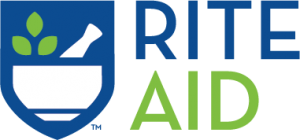CAMP HILL, Pa. — Rite Aid has published its third annual corporate sustainability report, detailing the company’s enhanced Environmental, Social and Governance (ESG) strategy. The report introduces four key pillars underpinning Rite Aid’s sustainability efforts: building a thriving planet, thriving business, thriving workplace and thriving community.
 “As a health care organization that aspires to support the whole health of its communities, we understand the critical need to address notable issues like climate change, product safety, energy management, and health inequities,” said Trent Kruse, senior vice president, investor relations and treasury, Rite Aid. “Our third annual sustainability report illustrates the progress we’ve made across critical ESG initiatives, and lays out a new framework for our sustainability efforts focused around four key pillars. We are pleased with our progress, and look forward to continuing to elevate our efforts around each pillar as we carry out our RxEvolution strategy.”
“As a health care organization that aspires to support the whole health of its communities, we understand the critical need to address notable issues like climate change, product safety, energy management, and health inequities,” said Trent Kruse, senior vice president, investor relations and treasury, Rite Aid. “Our third annual sustainability report illustrates the progress we’ve made across critical ESG initiatives, and lays out a new framework for our sustainability efforts focused around four key pillars. We are pleased with our progress, and look forward to continuing to elevate our efforts around each pillar as we carry out our RxEvolution strategy.”
The report fosters transparency and accountability by tracking Rite Aid’s performance on existing efforts over the past year, while also serving as a benchmark to identify and develop future sustainability priorities and goals. The company’s new sustainability pillars and key highlights of this year’s report include:
Thriving Planet
Goal: Reduce our overall environmental impact.
2020 Highlights:
In 2020, Rite Aid demonstrated progress in reducing its environmental footprint through energy and waste reduction, as well as fleet fuel efficiency efforts.
- 2020 was the first year Rite Aid did not rely on 100% grid electricity. Through a partnership with 3 Phases Renewables, Rite Aid provided 50% renewable power for select stores in Southern California.
- To reduce fuel consumption, Rite Aid decreased its passenger vehicle fleet by 12%, which saved 300,000 gallons of fuel and reduced emissions by 2,638 metric tons.
- Rite Aid cut its overall advertising circular programs by 11 million copies per week, which reduced the company’s overall paper use by 35% over last year and by 70% over the level of three years ago.
- Through ongoing recycling efforts over the past year, Rite Aid diverted more than 50,000 tons of recyclable materials from landfills.
Thriving Business
Goal: Embed sustainability into every level of our value chain.
2020 Highlights:
Over the past year, Rite Aid has worked with supplier partners to improve chemical management and product safety to curate a product assortment that supports the whole health needs of customers.
- In 2020, Rite Aid’s primary focus was to meet its goal of eliminating eight chemicals of high concern (the “Evil 8”) from its private-brand formulated products.
- From 2019-2020, Rite Aid launched more than 278 own-brand items free of “Evil 8” chemicals and reformulated more than 60 items to eliminate these chemicals.
- As of March 2021, only 13 formulas (1% of its assortment) contained these chemicals. Rite Aid continues to work with its suppliers to reformulate the outstanding formulas.
- For the second year in a row, Rite Aid was recognized in the Safer Chemicals, Healthy Families 5th annual “Who’s Minding the Store?” retailer report card as the leading traditional drug store chain for its efforts to reduce or eliminate toxic chemicals from products sold. Rite Aid ranked 7th out of 50 retailers evaluated in 2020.
Thriving Workplace
Goal: Optimize the Rite Aid associate experience, opportunity and wellbeing across our organization.
2020 Highlights:
In 2020 Rite Aid continued optimizing its workforce through enhanced communication and engagement by/with:
- Transforming our approach to diversity, equity and inclusion, including the hiring of an experienced Vice President of Diversity, Equity & Inclusion to develop a DEI Center of Excellence and integrated organizational DEI strategy;
- Annual and periodic pulse surveys with 70% associate participation rate;
- Increased personal and professional associate development opportunities, including training on leadership, safety, compliance and other critical business skills;
- Associate wellness programs and tools for whole health in areas such as mental health, disease management, and financial wellness.
Thriving Community
Goal: Improve health outcomes and provide better access to care in the communities we serve.
2020 Highlights:
In 2020, Rite Aid customers and communities have needed us more than ever. Rite Aid’s associates have been at the heart of the response to the pandemic, safely providing communities with essential information, supplies, services and support for COVID-19 testing and vaccinations.
- Over 1,200 COVID-19 drive-through locations offer free COVID-19 testing, available to anyone 4+ regardless of symptomatic status.
- Rite Aid has conducted thousands of community vaccine clinics for vulnerable or underserved populations.
- As of May 29, 2021, Rite Aid has administered over 5 million COVID-19 vaccines.
- Rite Aid has undertaken efforts to educate communities about COVID-19 testing, vaccine eligibility and availability, and vaccine safety through an online COVID-19 information resource and community partnerships.
- Rite Aid installed more than 826 safe medication disposal kiosks in local law enforcement facilities through the Rite Aid Foundation Safe Medication Disposal program.
- Added 65 additional safe medication disposal kiosks in select Rite Aid stores, for a total of 165 units, with plans to expand in additional west coast stores in 2021.
Rite Aid’s corporate sustainability report was prepared using guidance from the Sustainability Accounting Standards Board (SASB), as well feedback from key internal and external stakeholders. To learn more about Rite Aid’s sustainability efforts and progress, the entire report can be found here.




You must be logged in to post a comment Login